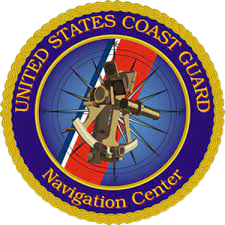The Inmarsat C maritime mobile satellite system has an inherent capability, known as
SafetyNET Services
Virtually all navigatable waters of the world are covered by Inmarsat satellites. Each satellite transmits EGC traffic on a designated channel at 1.5 GHz. Any ship sailing within the coverage area of an Inmarsat satellite will be able to receive all SafetyNET messages broadcast over this channel by that satellite. All Inmarsat C maritime ship stations can monitor the EGC channel. The EGC channel can also be monitored by dedicated receive-only equipment installed separately or as part of an Inmarsat A station.
The International Maritime Organization has announced that by June 1998, broadcasts of navigational and meteorological information will be made for every NAV/MET Area of the globe. Search and Rescue information is also broadcast in most areas.
Inmarsat C SafetyNET services currently include:
- Urgency messages and navigational warnings to rectangular or circular areas
- Coastal warnings (in place of NAVTEX; used only in Australia)
- Shore-to-ship distress alerts to circular areas
- Search-and-rescue coordination messages to rectangular or circular areas
- Meteorological and navigational warnings and meteorological forecasts to a NAVAREA
United States SafetyNET broadcasts include:
- NAVAREA IV and XII navigational warning broadcasts from the U.S. National Imagery and Mapping Agency
- NAVAREA IV, XII and XVI meteorological forecasts and warnings from the U.S. National Weather Service
- Distress alerts and search and rescue warnings from the U.S. Coast Guard
- Atlantic ice reports from the International Ice Patrol, U.S. Coast Guard
Ships located outside a circular or rectangular area will not receive a message addressed to these areas, provided the Inmarsat C satellite terminal is connected to a GPS or similar navigational receiver, or the ship's position has been recently updated manually. If the terminal is not connected to a navigational receiver, then it will receive
The printing of messages already received correctly is automatically suppressed.
SafetyNET messages include a special header consisting of five "C" codes:
- C1 - priority code - 1 digit - distress, urgency, safety, routine
- C2 - service code - 2 digits - type of message broadcast
- C3 - address code - 12 characters - area broadcast instructions
- C4 - repetition rate - 2 digits - number and frequency of broadcasts
- C5 - presentation code - 2 digits - type of alphabet used
SafetyNET Handbook
The National Geospatial-Intelligence Agency (NGA) maintains the SafetyNET Users Handbook on the Inmarsat Homepage, and is available at no charge.
Receiving Broadcasts
Most Inmarsat C terminals will not receive a safety broadcast if it is transmitting a message, or if it is tuned to an Inmarsat ocean region not used for safety broadcasts in the area traveled. Most SafetyNET messages are rebroadcast after 6 minutes, to give a transmitting terminal time to receive missed messages. Lists of SafetyNET broadcast schedules and areas have been published by the JOINT WMO/IOC COMMISSION FOR OCEANOGRAPHY AND MARINE METEOROLOGY to assist ship operators tune Inmarsat C terminals to the proper Inmarsat ocean region.
Although the reception of SafetyNET traffic is automatic, the shipboard operator must set up the receiver properly at the start of the voyage:
- Select the appropriate broadcast channel. This can often be accomplished by logging on to a land earth station in the ocean region for which needed broadcasts are made.
- Select the NAVAREA identification code.
- If traveling near Australia, select the proper coastal area codes.
- Ensure the Inmarsat C station is connected to a working navigational receiver. If a connection cannot be made, the ship's position must be manually updated every four hours during the ship's voyage. Without these updates, reams of unnecessary broadcast messages will be received.
Broadcast Channel Information
The modulation rate of the broadcast channel is 1200 bits per second. Forward error correction is applied to this, creating an effective information transfer of 600 bits per second (rate 1/2 convolutional coding with interleaving is used to disperse error bursts which arise when deep fades are present). This ensures that there is a high probability of receiving a message correctly at the first transmission, irrespective of the atmospheric conditions or the ship's position within the satellite coverage.
For further information on the International SafetyNET Service, contact:
The ChairmanInternational SafetyNET Co-ordinating Panel
International Maritime Organization
4 Albert Embankment
London SE1 7SR
Fax: +44 171 587 3210
Telex: 23588 IMOLDN G

